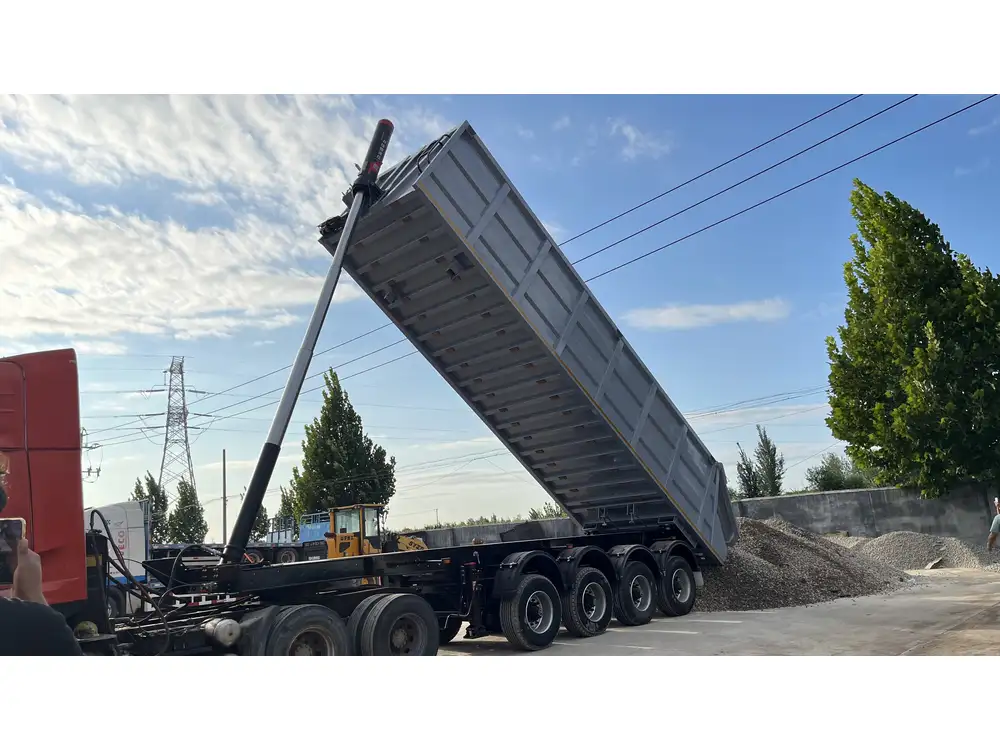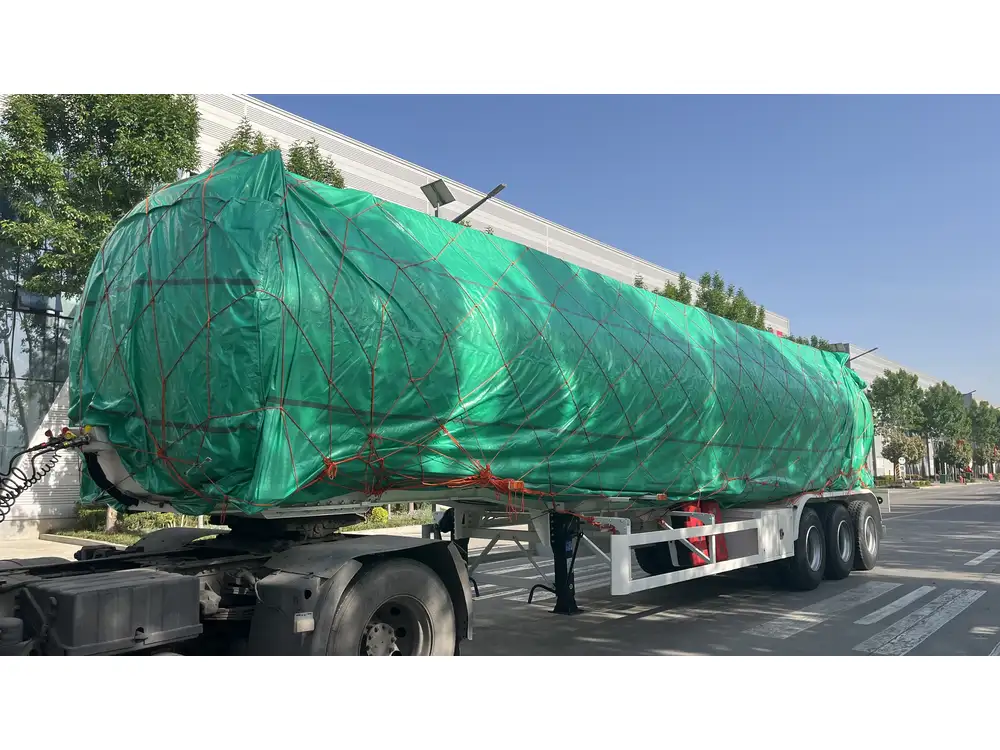Flipping a semi-trailer can seem like a daunting task for many individuals or businesses considering entering the trucking industry. Given the complexity of semi-trailer structures, the associated maintenance, and the financial implications, understanding the ins and outs of these vehicles becomes imperative. In this article, we will explore the various facets of semi-trailer flipping, addressing common concerns, procedures, and expert tips to facilitate a smoother process.
Understanding Semi-Trailer Construction
1. The Anatomy of a Semi-Trailer
Before delving into the process of flipping a semi-trailer, it’s essential to understand its construction. A semi-trailer differs from a standard trailer in that it does not have a front axle and relies on a tractor’s hitch for support. Here’s a breakdown of its core components:
| Component | Description |
|---|---|
| Chassis | The skeletal structure that supports the load and trailer components. |
| Axles | Usually two or more; they support the trailer’s weight and connect the wheels. |
| Wheels/Tires | Essential for movement, their size and type might vary depending on weight capacity. |
| Cargo Area | The space where products are loaded, which can differ in size and configuration. |
| Braking System | Necessary for safety, often includes air brakes in larger trailers. |
| Suspension System | Helps distribute the load evenly and ensure a smooth ride. |
Understanding these components is vital before purchasing or flipping a semi-trailer.

2. Types of Semi-Trailers
Semi-trailers come in various types, each designed for specific cargo:
- Flatbed Trailers – Ideal for transporting oversized loads that may not fit in enclosed trailers.
- Refrigerated Trailers – Designed to transport perishable goods and maintain specific temperature settings.
- Dry Van Trailers – Enclosed and secure, suited for non-perishable items without temperature control.
- Tanker Trailers – Specifically designed for transporting liquids, carrying unique challenges for safety and regulations.
Choosing the right type significantly impacts the ease of flipping a semi-trailer.
Assessing Market Conditions
1. Researching Demand
Before flipping a semi-trailer, assessing the market demand is crucial. Flipping entails buying a trailer at a lower price, improving it if necessary, and reselling it for a profit. Use resources such as:
- Online Marketplaces: Platforms like TruckPaper, eBay, and other dedicated trucking forums.
- Industry Reports: Publications and reports from organizations like the American Trucking Associations provide insights into trends and demands.
- Networking: Engage with industry professionals via trade shows or online communities. This networking can uncover potential buyers and valuable insights about market preferences.

2. Evaluating Regional Variations
The demand for specific types of semi-trailers can vary based on region. For instance, refrigerated trailers may see higher demand in warmer climates due to the transport of food products, while flatbed trailers might surge in areas with booming construction industries.
| Region | High Demand Types |
|---|---|
| Northeast U.S. | Refrigerated Trailers |
| Southeast U.S. | Flatbed Trailers |
| Midwest U.S. | Dry Van Trailers |
| West Coast | Tanker Trailers |
By understanding these dynamics, you can position your semi-trailer flipping strategy to maximize profits.
Purchasing a Semi-Trailer
1. Financial Considerations
Establishing a budget is critical. Semi-trailers can range widely in price, often influenced by age, condition, and market demand. Consider the following costs:
- Initial Purchase Price: Research prices for similar trailers in the market.
- Repair and Maintenance: Factor in potential costs for repairs after purchase.
- Insurance and Licensing: Protect your investment and meet legal requirements.
- Market Timing: Prices might fluctuate based on seasonal demand; for instance, agricultural trailers might be more expensive pre-harvest.

2. Inspection Checklist
When buying a semi-trailer, conducting a thorough inspection will help avoid future troubles. Here’s a structured checklist to guide you:
- Chassis: Look for rust, corrosion, or structural damage.
- Axles and Wheels: Check for any misalignment, wear, or bearing issues.
- Brakes: Inspect for wear and ensure they meet safety standards.
- Suspension System: Look for any leaks or damage in the air bags or springs.
- Flooring: On enclosed trailers, examine the flooring for rot or damage.
Every detail counts when determining the viability of a semi-trailer for flipping.
Improving the Semi-Trailer
1. Maintenance and Repairs
Post-purchase renovations can increase value. Below are potential improvement areas that attract buyers:
- Structural Repairs: Address any chassis, axle, or welding issues.
- Repainting: A fresh coat of paint can enhance aesthetics and rejuvenate the trailer’s appeal.
- Upgraded Braking Systems: Installing modern braking technology increases safety and can be a selling point.
- Interior Cleaning and Refurbishing: If the trailer is enclosed, deep cleaning and minor repairs can dramatically impact its appeal.

2. Understanding Regulations
Familiarize yourself with local regulations governing semi-trailer use. Compliance not only ensures safety but also makes your trailer more attractive to potential buyers who prioritize legality and insurance.
3. Documentation
Keeping comprehensive records of all maintenance, repairs, and inspections performed on the semi-trailer can increase buyer trust and value. Providing a detailed history proves the vehicle’s reliability.
Marketing Your Semi-Trailer Effectively

1. High-Quality Listings
To attract buyers, listings must be engaging and informative. Include:
- High-Resolution Images: Capture images from various angles, showcasing the trailer’s best features.
- Detailed Descriptions: Highlight unique selling points, maintenance history, and compliance with regulations.
- Competitive Pricing: Research similar trailers to set a competitive price, factoring in the improvements made.
2. Utilizing Online Platforms
Maximize your reach by listing on multiple platforms that cater specifically to semi-trailers, such as:
- Specialized Trucking Websites: Reach a targeted audience actively searching for trailers.
- Social Media Channels: Utilize platforms like Facebook Marketplace or dedicated trucking groups.
3. Networking with Industry Professionals
Cultivating relationships with trucking companies and logistics firms can lead to direct sales. Networking not only enhances your reputation but may also yield valuable referrals.

Final Considerations
1. Risk Analysis
Understanding the risks involved in flipping semi-trailers is essential. Economic downturns can affect demand and pricing significantly. Stay informed about industry trends and fluctuations.
2. Continuous Learning
The trucking industry is constantly evolving. Engaging in continuous education—be it attending seminars, webinars, or obtaining certifications—can provide insights into best practices and emerging trends.

3. Developing a Business Plan
For those serious about flipping semi-trailers as more than just a side venture, a comprehensive business plan can guide your strategy, clarify your goals, and provide a roadmap for growth.
Conclusion
Flipping a semi-trailer, while challenging, can be highly rewarding with the right knowledge and strategy. By understanding the complexities of trailer construction, assessing market conditions, optimizing purchases, improving the vehicles, and employing effective marketing techniques, you can navigate this multifaceted process successfully. The rewards of successful flipping not only lie in profits but also in contributing valuable assets to the ever-evolving transportation sector. By carefully considering each step from purchase to resale, you position yourself to tackle the competitive landscape and emerge successful in the realm of semi-trailer flipping.



